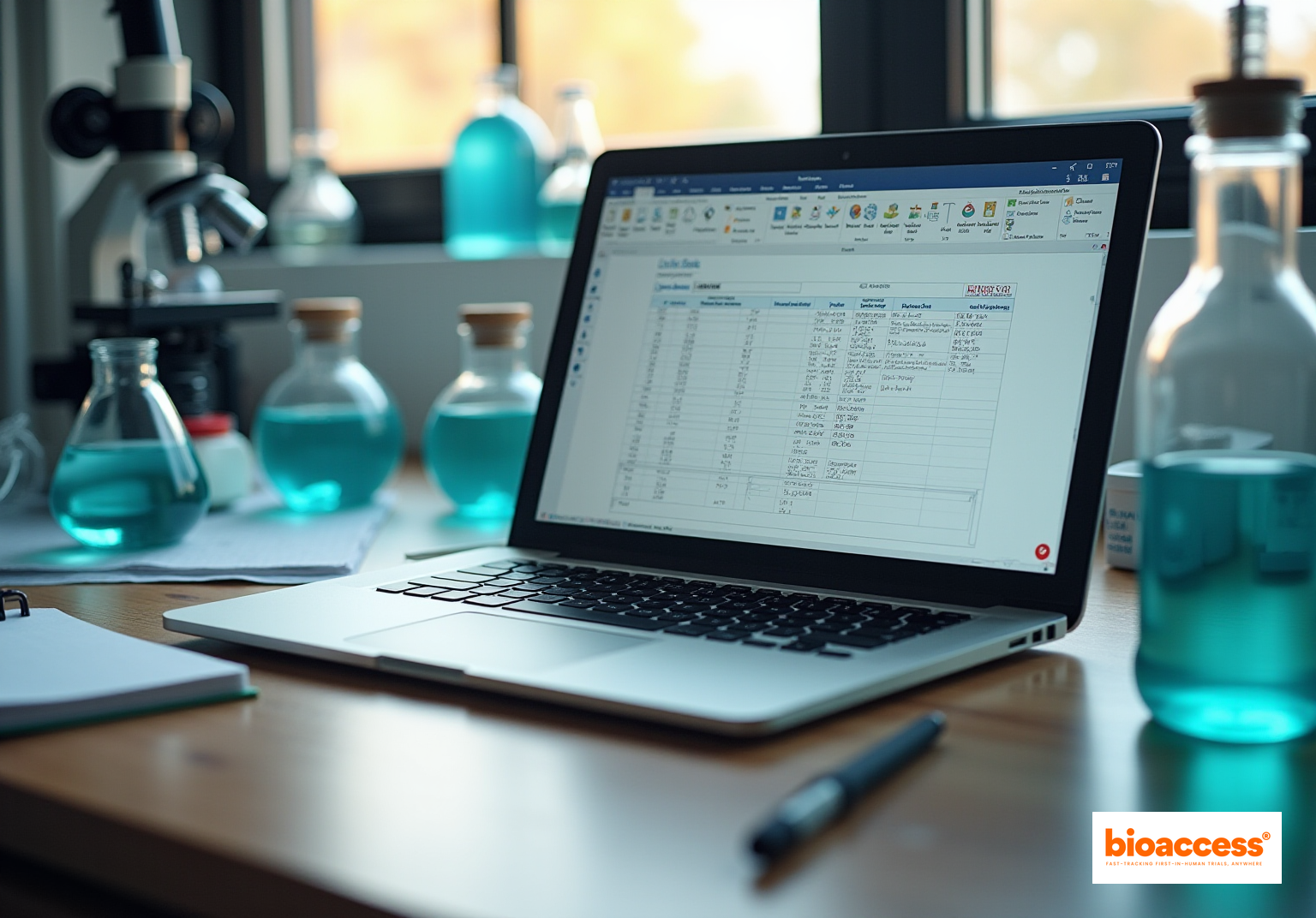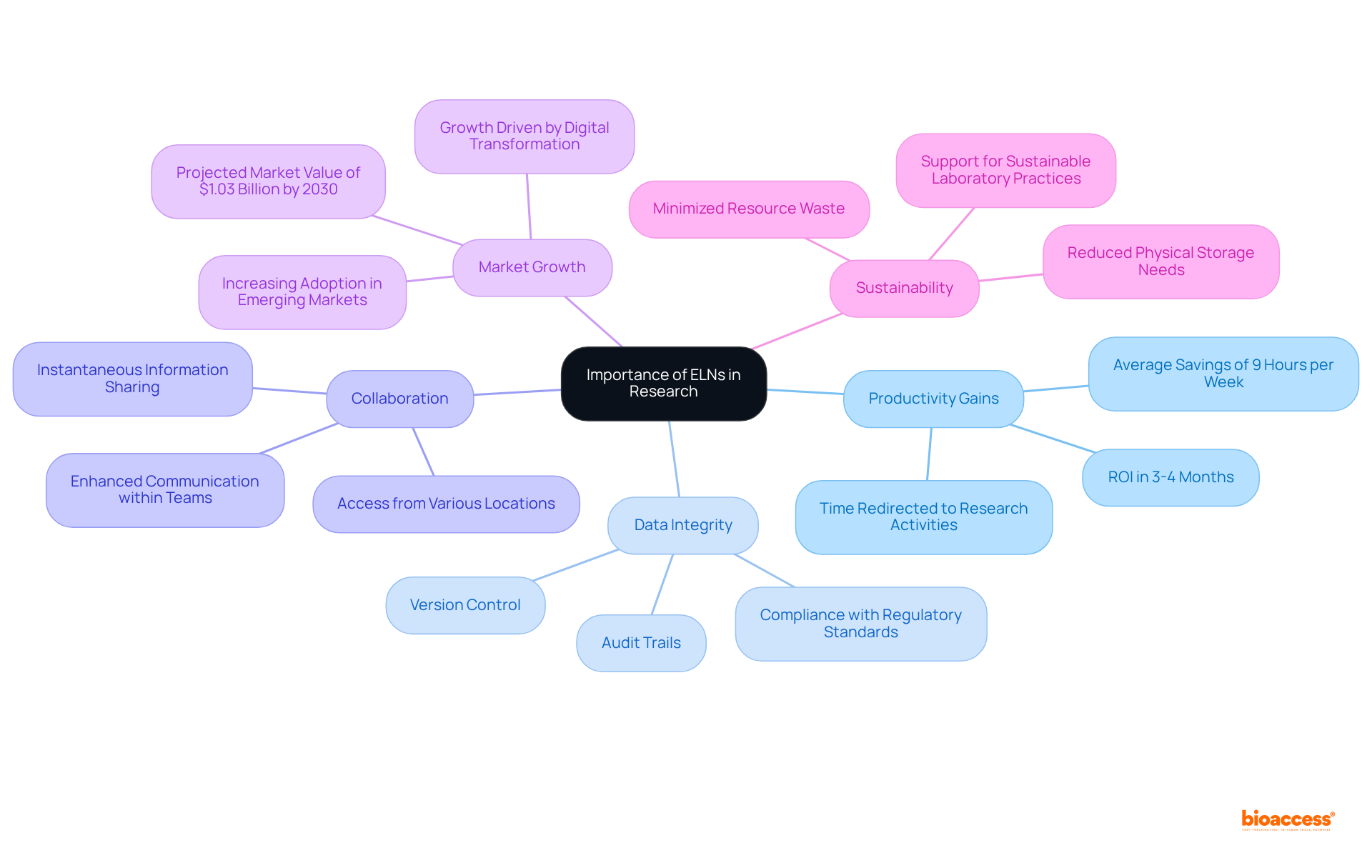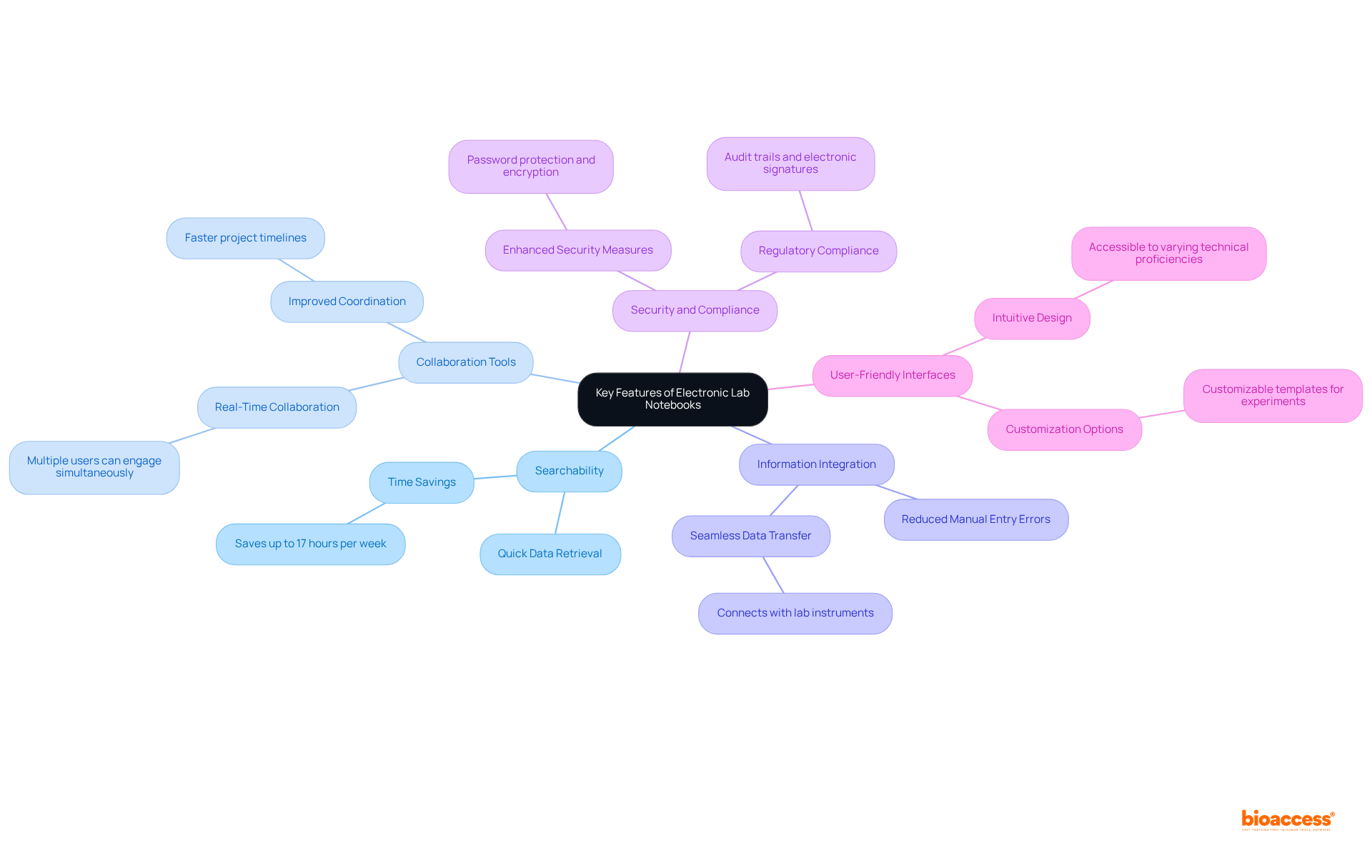


This article defines the electronic lab notebook (ELN) and highlights its key features, underscoring its critical role in modern research environments. ELNs serve as digital replacements for traditional lab notebooks, enhancing data management, collaboration, and compliance. With features such as:
ELNs significantly increase productivity and operational efficiency in scientific research. As the landscape of research evolves, the adoption of ELNs becomes essential for researchers seeking to optimize their workflows and ensure data integrity.
The transition from traditional paper lab notebooks to electronic lab notebooks (ELNs) signifies a pivotal moment in the scientific community. These digital platforms not only streamline the documentation process but also enhance collaboration, data integrity, and compliance within research environments. As laboratories increasingly acknowledge the advantages of adopting ELNs, a critical question emerges:
An electronic lab notebook serves as a digital platform designed to replace traditional paper lab notebooks used by scientists, engineers, and technicians for documenting studies, experiments, and procedures in laboratory settings. These electronic lab notebooks enable users to systematically record, store, and manage experimental data, making access, sharing, and collaboration among scientific teams easier. Unlike their paper counterparts, an electronic lab notebook offers features such as searchability, data integration, and enhanced security, establishing it as an indispensable asset in modern scientific research.
By 2025, approximately 30% of laboratories are expected to adopt electronic lab notebooks, indicating a significant shift towards digital solutions in research environments. The ELN market is projected to expand from USD 692.8 million in 2024 to USD 966.2 million by 2030, reflecting a strong demand for these innovative tools. Barry Bunin, CEO of Collaborative Drug Discovery, notes that the use of electronic lab notebooks not only enhances compliance with regulatory standards, including 21 CFR Part 11, but also fosters interdisciplinary collaboration.
While the transition to electronic lab notebooks streamlines workflows and enhances compliance, it is essential to address potential challenges in implementation, such as security concerns and the need for user training. Ultimately, the deployment of electronic lab notebooks cultivates a more efficient scientific environment while also supporting regulatory adherence.

Electronic lab notebooks play a pivotal role in modern research by streamlining the documentation process, enabling scientists to efficiently record and access data. This efficiency results in notable productivity gains, with users reporting an average savings of 9 hours per week—time that can be redirected towards essential research activities. Moreover, researchers can recover their investment in the electronic lab notebook software in as little as 3 to 4 months. Thus, adopting such tools is not only a strategic move for enhancing productivity but also a financially prudent decision.
The integrity of data is significantly improved through features like audit trails and version control, which ensure that all modifications are meticulously tracked and documented. This capability not only bolsters compliance with regulatory standards but also assists in meeting the requirements of funding agencies, thereby promoting reproducibility in scientific studies—a critical factor in validating research findings.
Furthermore, the use of electronic lab notebooks facilitates seamless collaboration among team members by allowing for instantaneous information sharing. This integrated approach enhances communication and coordination within research teams, ultimately leading to superior scientific outcomes. For example, at the University of Wisconsin-Madison, nearly 100 labs have adopted an ELN system, reporting improved record-keeping and easier information sharing.
As the electronic lab notebook market is projected to reach a value of $1.03 billion by 2030, the adoption of electronic lab notebooks is becoming increasingly essential for research facilities aiming to enhance operational efficiency and maintain high standards of data integrity. Additionally, by reducing the physical storage space needed for lab notebooks and minimizing resource waste, sustainable laboratory practices are fostered by electronic lab notebooks.

The concept of electronic lab notebooks emerged in the late 1990s, coinciding with the advent of personal computers and the internet. Initial versions of these notebooks were rudimentary digital replicas of traditional paper notebooks, primarily focused on data entry and storage. However, advancements in technology have resulted in the creation of sophisticated electronic lab notebooks that are equipped with features like cloud storage, mobile access, and seamless integration with laboratory instruments. This evolution has transformed electronic lab notebooks into comprehensive platforms that not only facilitate information management but also enhance collaboration and compliance within investigative environments. Today, the widespread adoption of electronic lab notebooks highlights their vital role in modern research practices across various scientific disciplines.
The implementation of electronic lab notebooks has significantly expanded across multiple scientific fields, due to their ability to streamline workflows and enhance data integrity. For instance, the global electronic lab notebook market is projected to grow from USD 0.72 billion in 2025 to USD 1.03 billion by 2030, reflecting a compound annual growth rate (CAGR) of 7.3%. This growth illustrates the increasing reliance on digital solutions in research facilities, as scientists acknowledge the critical importance of electronic lab notebooks for effectively managing complex datasets.
Historical case studies highlight the transition from paper to digital formats, showcasing the limitations of traditional notebooks in terms of information accessibility and reproducibility. The integration of electronic lab notebooks with Laboratory Information Systems (LIS) has significantly enhanced laboratory efficiency by allowing smooth data transfer and minimizing transcription errors. As electronic lab notebooks evolve, they are expected to play a pivotal role in advancing scientific discovery, enabling researchers to focus on innovation and breakthroughs that benefit society.

Key features of the electronic lab notebook significantly enhance research collaboration and efficiency.
These features collectively enhance the research process, establishing the electronic lab notebook as an indispensable tool in contemporary scientific environments.

The electronic lab notebook (ELN) has emerged as a crucial tool for scientists, engineers, and technicians, revolutionizing research documentation. Transitioning from traditional paper notebooks to digital platforms allows researchers to enjoy enhanced efficiency, improved data integrity, and streamlined collaboration—essential elements in the fast-paced world of scientific inquiry.
Key insights from the discussion highlight impressive productivity gains among ELN users, with an average savings of 9 hours per week, alongside significant market growth projected for electronic lab notebooks. The distinguishing features of ELNs—such as searchability, collaboration tools, information integration, and security measures—collectively foster a more effective and compliant research environment. Furthermore, the historical evolution of these tools underscores their increasing relevance and sophistication in modern laboratories.
As the scientific community embraces digital solutions, adopting electronic lab notebooks presents a vital opportunity to enhance research practices and foster innovation. By investing in ELNs, laboratories not only improve operational efficiency but also reinforce data integrity and regulatory compliance. Embracing this shift toward digital documentation is not merely a trend; it is a necessary step for researchers striving for excellence in their scientific endeavors.
What is an Electronic Lab Notebook (ELN)?
An Electronic Lab Notebook (ELN) is a digital platform designed to replace traditional paper lab notebooks. It is used by scientists, engineers, and technicians to document studies, experiments, and procedures in laboratory settings, allowing users to systematically record, store, and manage experimental data.
What are the advantages of using an ELN over a traditional paper lab notebook?
ELNs offer several advantages, including searchability, data integration, enhanced security, and easier access and sharing of data among scientific teams. This makes collaboration more efficient compared to traditional paper notebooks.
What is the projected adoption rate of ELNs in laboratories by 2025?
By 2025, it is expected that approximately 30% of laboratories will adopt electronic lab notebooks, indicating a significant shift towards digital solutions in research environments.
What is the projected market growth for ELNs from 2024 to 2030?
The ELN market is projected to grow from USD 692.8 million in 2024 to USD 966.2 million by 2030, reflecting strong demand for these innovative tools.
How do ELNs enhance compliance with regulatory standards?
ELNs enhance compliance with regulatory standards, such as 21 CFR Part 11, by providing features that support regulatory adherence and improve record-keeping practices.
What challenges might laboratories face when implementing ELNs?
Potential challenges in implementing ELNs include security concerns and the need for user training to ensure effective use of the technology.
How do ELNs contribute to interdisciplinary collaboration?
ELNs foster interdisciplinary collaboration by enabling easier sharing and access to experimental data among different scientific teams, thus enhancing teamwork in research environments.